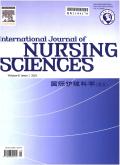探讨视神经脊髓炎谱系障碍患者的核心症状和症状群:网络分析
IF 3.1
3区 医学
Q1 NURSING
引用次数: 0
摘要
目的应用网络分析方法识别视神经脊髓炎频谱障碍(NMOSD)患者的核心症状和症状群。方法于2023年10月10日至30日选取140例NMOSD患者进行在线问卷调查。调查工具包括一般信息问卷和自制的NMOSD症状量表,包括29种症状的患病率、严重程度和困扰程度。采用聚类分析识别症状聚类,采用网络分析分析症状网络和节点特征,采用强度中心性(rs)、紧密中心性(rc)和中间中心性(rb)等中心指标识别核心症状和症状聚类。结果最常见的症状为疼痛(65.7%),其次为感觉异常(65.0%)、疲劳(65.0%)、易醒(63.6%)。从症状的负担程度来看,疼痛是最令人负担的症状,其次是感觉异常、易醒、疲劳和入睡困难。共鉴定出6个症状簇:躯体感觉、运动、视觉和记忆症状簇、膀胱和直肠症状簇、睡眠症状簇和神经心理症状簇。疲劳(rs = 12.39, rb = 68.00, rc = 0.02)是最中心、最突出的桥梁症状,运动症状(rs = 2.68, rc = 0.10)是最中心的症状。结论我们的研究表明,有必要针对NMOSD患者的疲劳、疼痛和运动症状群进行症状管理。本文章由计算机程序翻译,如有差异,请以英文原文为准。
Exploring core symptoms and symptom clusters among patients with neuromyelitis optica spectrum disorder: A network analysis
Objectives
To identify core symptoms and symptom clusters in patients with neuromyelitis optica spectrum disorder (NMOSD) by network analysis.
Methods
From October 10 to 30, 2023, 140 patients with NMOSD were selected to participate in this online questionnaire survey. The survey tools included a general information questionnaire and a self-made NMOSD symptoms scale, which included the prevalence, severity, and distress of 29 symptoms. Cluster analysis was used to identify symptom clusters, and network analysis was used to analyze the symptom network and node characteristics and central indicators including strength centrality (rs), closeness centrality (rc) and betweeness centrality (rb) were used to identify core symptoms and symptom clusters.
Results
The most common symptom was pain (65.7%), followed by paraesthesia (65.0%), fatigue (65.0%), easy awakening (63.6%). Regarding the burden level of symptoms, pain was the most burdensome symptom, followed by paraesthesia, easy awakening, fatigue, and difficulty falling asleep. Six clusters were identified: somatosensory, motor, visual, and memory symptom clusters, bladder and rectum symptom clusters, sleep symptoms clusters, and neuropsychological symptom clusters. Fatigue (rs = 12.39, rb = 68.00, rc = 0.02) was the most central and prominent bridge symptom, and motor symptom cluster (rs = 2.68, rc = 0.10) was the most central symptom cluster among the six clusters.
Conclusions
Our study demonstrated the necessity of symptom management targeting fatigue, pain, and motor symptom cluster in patients with NMOSD.
求助全文
通过发布文献求助,成功后即可免费获取论文全文。
去求助
来源期刊

International Journal of Nursing Sciences
Nursing-Nursing (all)
CiteScore
6.10
自引率
2.60%
发文量
408
审稿时长
25 days
期刊介绍:
This journal aims to promote excellence in nursing and health care through the dissemination of the latest, evidence-based, peer-reviewed clinical information and original research, providing an international platform for exchanging knowledge, research findings and nursing practice experience. This journal covers a wide range of nursing topics such as advanced nursing practice, bio-psychosocial issues related to health, cultural perspectives, lifestyle change as a component of health promotion, chronic disease, including end-of-life care, family care giving. IJNSS publishes four issues per year in Jan/Apr/Jul/Oct. IJNSS intended readership includes practicing nurses in all spheres and at all levels who are committed to advancing practice and professional development on the basis of new knowledge and evidence; managers and senior members of the nursing; nurse educators and nursing students etc. IJNSS seeks to enrich insight into clinical need and the implications for nursing intervention and models of service delivery. Contributions are welcomed from other health professions on issues that have a direct impact on nursing practice.
 求助内容:
求助内容: 应助结果提醒方式:
应助结果提醒方式:


